In an age when textiles are electronically woven, digitally printed and laser cut to the highest degree of precision, one might look at the work of May Morris with some degree of indifference. We are used to seeing this level of perfection in needlework – or so we think. The finesse of her handicraft is in fact worth a much closer look, and the current exhibition at Dovecot Studios in Edinburgh allows just that.
‘May Morris: Art & Life’ explores the work of the woman who in 1885 at just 23 years old took over the embroidery department for Morris & Company. While it was her father’s design firm, it was still unusual for women to get involved in the family business at that time. It might be said she was quite literally born into it: her mother, Jane Morris, gave birth to her at Red House in Bexleyheath, the home designed by William Morris and the architect Philip Webb in 1859–60. Red House was decorated by and frequently filled with those Pre-Raphaelite friends who would help William establish Arts and Crafts as a movement: Dante Gabriel Rossetti, Elizabeth (Siddal) Rossetti, Edward and Georgiana Burne-Jones. Although the family lived there just five years – William decided the commute into London was too difficult and costly – the collaborative and bohemian atmosphere established at Red House was a feature of May Morris’s childhood.
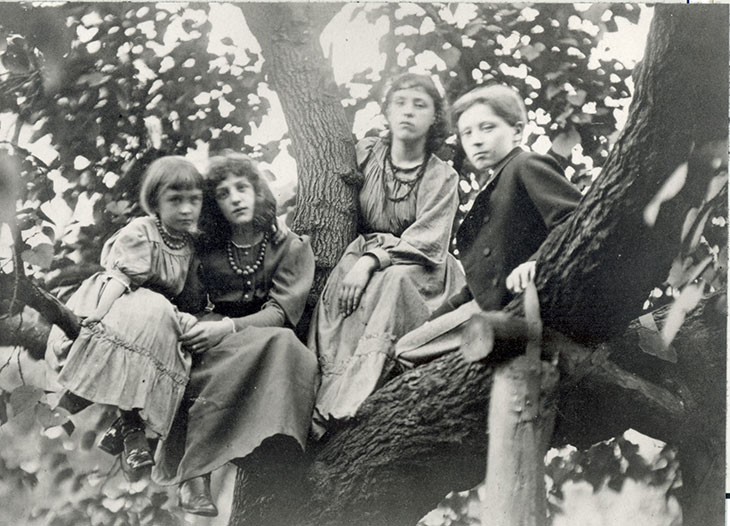
Margaret Burne-Jones, May Morris, Jenny Morris and Philip Burne-Jones photographed in the garden of The Grange, Fulham, 1874. © William Morris Gallery, London Borough of Waltham Forest
The exhibition opens with a photograph from 1874 depicting May with her elder sister Jenny and the Burne-Jones children seated in a tree, the girls dressed in simple, loose gowns with large bead necklaces. At 12 years old May already wore Artistic Dress, the sartorial style that rejected more restrictive corseted and crinolined Victorian fashions. It was loosely structured and featured the handcrafted details like embroidery and smocking that Morris would come to master. This alternative approach to dress showed the clear influence of her mother, who was noted for her unconventional ‘Pre-Raphaelite’ style. It also shaped May Morris’s creative practice as a designer of textiles for the business, and of clothes for herself and her friends. Several examples of Artistic Dress are on display in the exhibition, notably an exquisite purple cloak made after her return from a trip to Egypt in 1896–97.
Dovecot Studios is a fitting venue for the show, as it was founded by weavers from William Morris’s Merton Abbey workshop, recruited to Scotland by the original patron of the studio, the 4th Marquess of Bute – and its first tapestries are still on display in the Great Hall at Mount Stuart. Originally staged at the lovely but compact William Morris Gallery in 2017, the exhibition benefits from the expanded space at Dovecot. Even with more than 100 objects on display, there is room to contemplate them close-up, allowing appreciation of the fine needlework in particular. There are some new additions, too, that make the trip to Edinburgh worthwhile even for those who caught the show in Walthamstow. It’s only a shame Dovecot was unable to borrow the set of embroidered hangings depicting flora and fauna made by Morris and her friend Theodosia Middlemore for Melsetter House in Orkney in around 1900, which was acquired in 2014 by the National Museum of Scotland. This feels like a missed opportunity, as the hangings are currently not on display in the nearby museum’s very fine design galleries.
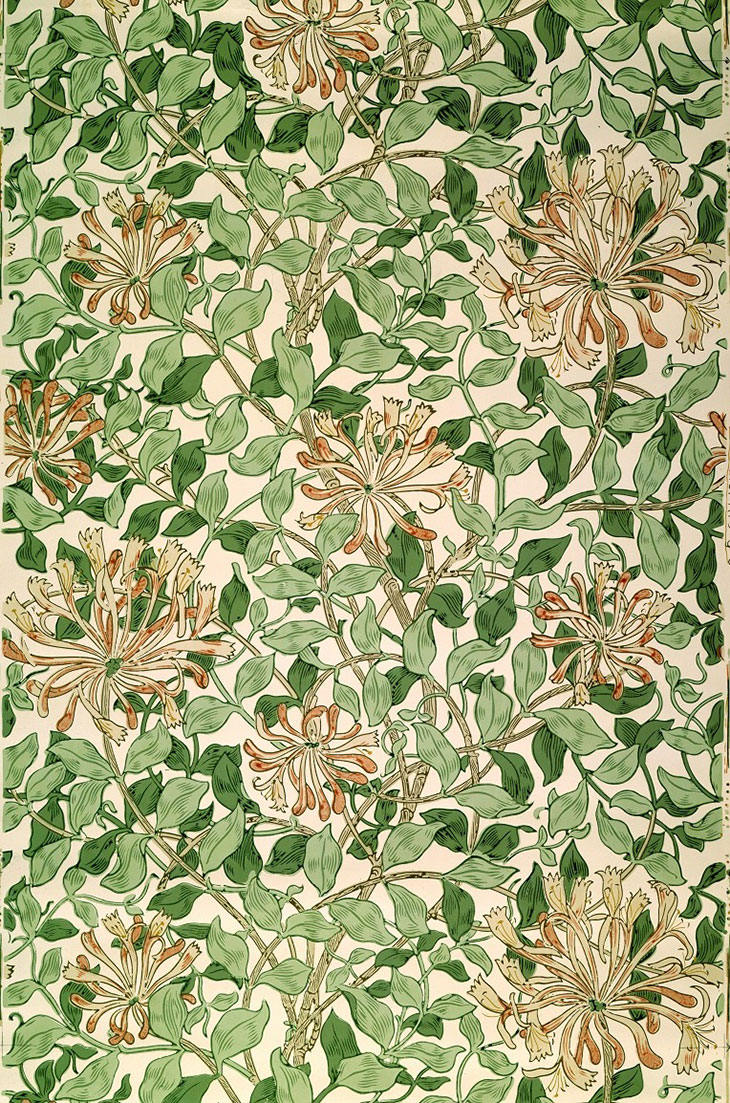
‘Honeysuckle’ wallpaper design (c. 1883), May Morris. © William Morris Gallery, London Borough of Waltham Forest
What the exhibition does show expertly is the breadth of Morris’s output as a designer, educator and businesswoman. We encounter her excellent early architectural drawings and watercolours, which hint at a perhaps unexplored talent for designing buildings, a field not then deemed acceptable for women. She studied at the National Art Training School (now the Royal College of Art), but the encouragement and tutelage of her artist family (her mother and aunt were master embroiderers) gave her a clear advantage. Working for Morris & Company, she created more floral motifs than her father, including the Honeysuckle pattern – still a bestseller today, and most recently appropriated by Jonathan Anderson in couture designs for the Spanish fashion house Loewe. Her talent was prolific, and the exhibition includes examples of her book bindings, jewellery designs, watercolours, and illuminations.
But the stars of the show are surely the embroideries done entirely in her own hand, from her own imagination. According to Dovecot’s curator Kate Grenyer, the wonderfully fine Maids of Honour (c. 1890s), stitched on delicate sheer silk net, is so expert that it is impossible to find the stitch ends on either side. It is a triumph of ‘Art Needlework’ – the free-form, freehand embroidery that Morris championed and taught to a generation of craftspeople and educators in places like the Royal School of Needlework, the Central School of Art, and more widely in creative industrial centres like Birmingham and Leeds.
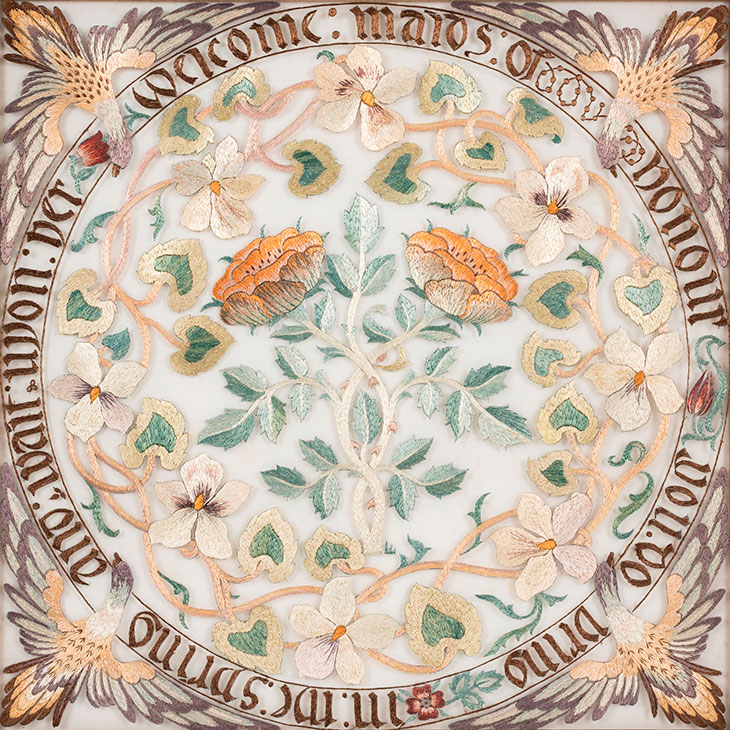
Maids of Honour (c. 1890s), designed and worked by May Morris. © William Morris Gallery, London Borough of Waltham Forest
We are also offered a narrative of Morris’s rather exciting life in tandem with her work. She followed in her father’s footsteps as an activist and socialist, writing and lecturing on the subject in Britain and the United States, as well as lending her creative hand to Socialist periodicals. She was also a campaigner for gender equality, establishing the Women’s Guild of Arts in 1907. She travelled throughout her life, documenting it in her diaries and sketchbooks, from girlhood stays with family friends George and Rosalind Howard (soon-to-be Lord and Lady Carlisle) at Naworth Castle in Cumberland to her adventures in Iceland with her latter-life companion Mary Lobb. The love triangle between Morris, George Bernard Shaw and Henry Halliday Sparling is briefly touched on via a photo of them rehearsing a play in c. 1886, along with the photographer Emery Walker, for the Socialist League. Her preference for Shaw is made clear in a recently rediscovered valentine to Shaw, beautifully illustrated, on view here.
Morris and Sparling were briefly married nonetheless, in ‘rebound’, it has been said, between ill-fated affairs with Shaw. She had no children, but the hopes of such are shown in one of only two known collaborative pieces made with her mother: a cot quilt entitled The Homestead and the Forest, created in 1889–90 in the months before her marriage. A delicate depiction of home and nature, it is also impressive in the way it reflects Morris’s own intellectual life, including quotations from The Rubáiyát of Omar Khayyám, Plato’s Republic, and William Blake’s Songs of Innocence and Experience.
In 1936, two years before her death, Morris wrote to Shaw: ‘I’m a remarkable woman – always was, though none of you seemed to think so.’ It has taken us too long to recognise it, but after leaving the exhibition at Dovecot, who could help but agree?
‘May Morris: Art & Life’ is at Dovecot Studios, Edinburgh, until 14 March.
Unlimited access from just $16 every 3 months
Subscribe to get unlimited and exclusive access to the top art stories, interviews and exhibition reviews.

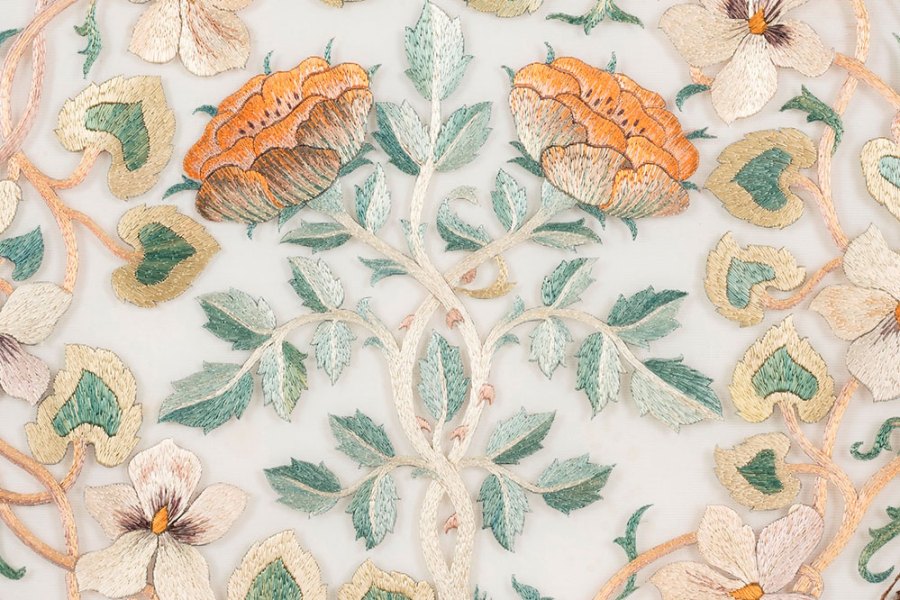
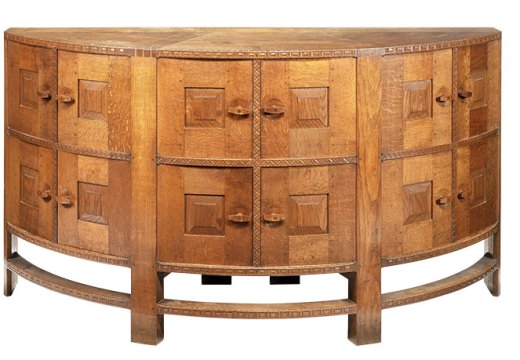
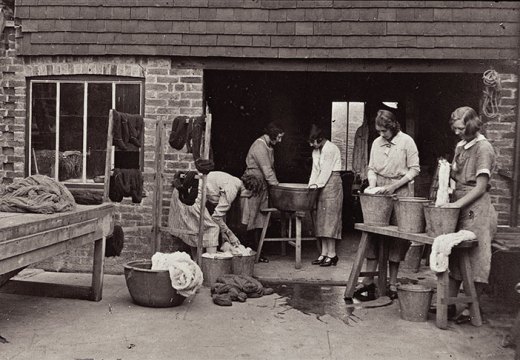
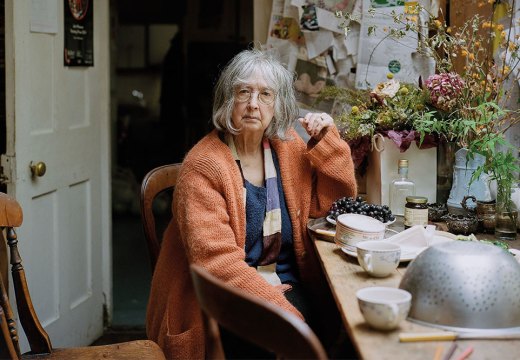









![Masterpiece [Re]discovery 2022. Photo: Ben Fisher Photography, courtesy of Masterpiece London](http://www.apollo-magazine.com/wp-content/uploads/2022/07/MPL2022_4263.jpg)
It’s time for the government of London to return to its rightful home